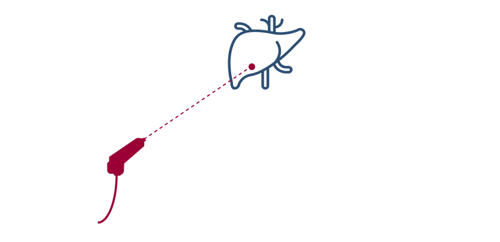Radiofrequency and Microwave Ablation (RFA)
Radiofrequency Ablation (RFA) can be used to treat various tumor types. An RFA uses heat to burn the cancer cells. A needle will be inserted through the skin into the tumor, assisted by image guided techniques like an ultrasound or a CT scan and connected to a generator. The generator makes the cells vibrate. The heat caused by this vibration burns the cancer cells.

Illustration ablation
RFA can be used to treat tumors up to a certain size
For radiofrequency ablation (RFA) a tumor cannot have a bigger diameter than 3.5 centimeters. RFA is primarily used for patients who cannot have surgery due to cardiovascular problems, lung issues, or other conditions. An interventional radiologist performs the procedure, and you will be given a local anesthetic.
Microwave Ablation
For tumors in the lung, liver, or kidneys that are 3.5 centimeters or bigger, we offer a similar treatment: Microwave Ablation (MWA).
 nl
nl
 Nederlands (Nederland)
Nederlands (Nederland)
 English (United States)
English (United States)